
Table of Contents for Bulletin of ASOR 380 (November 2018)
You can receive BASOR (and other ASOR publications) through an ASOR Membership. Please e-mail the Membership office if you have any questions.
Pp. 1–25: “A Possible Location in Northwest Sinai for the Sea and Land Battles between the Sea Peoples and Ramesses III,” by James K. Hoffmeier
The naval invasion of Egypt during the reign of Ramesses III by the Sea Peoples, coupled with the land invasion, represent critical events in ancient Egyptian history. 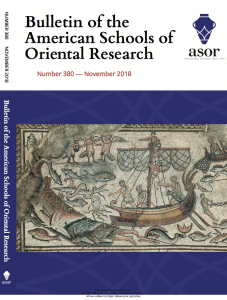
Click here to access the above article on The University of Chicago Press Journals (ASOR membership with online access and/or subscription to The University of Chicago Press Journals Current Content required).
Pp. 27–60: “A Middle Timnian Nomadic Encampment on the Faynan-Beersheba Road: Excavations and Survey at Nahal Tsafit (Late 5th/Early 4th Millennia B.C.E.),” by Kyle Knabb, StevenA. Rosen, Sorin Hermon, Jacob Vardi, Liora Kolska Horwitz, and Yuval Goren
The naval invasion of Egypt during the reign of Ramesses III by the Sea Peoples, coupled with the land invasion, represent critical events in ancient Egyptian history. This study explores a location for the maritime conflict, based on recent archaeological and palaeo-environmental investigations of the northwestern Sinai. 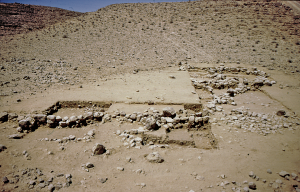
Click here to access the above article on The University of Chicago Press Journals (ASOR membership with online access and/or subscription to The University of Chicago Press Journals Current Content required).
Pp. 61–131: “The Huqoq Excavation Project: 2014–2017 Interim Report,” by Jodi Magness, Shua Kisilevitz, Matthew Grey, Dennis Mizzi, Daniel Schindler, Martin Wells, Karen Britt, Raʿanan Boustan, Shana O’Connell, Emily Hubbard, Jessie George, Jennifer Ramsay, Elisabetta Boaretto, and Michael Chazan
Excavations at Huqoq in Israel’s eastern Lower Galilee are bringing to light a Late Roman synagogue, a medieval public building, and the remains of ancient and modern (pre-1948) villages. In this interim report, 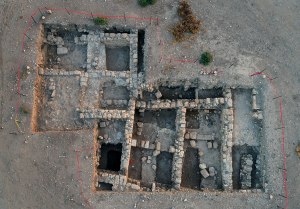
Click here to access the above article on The University of Chicago Press Journals (ASOR membership with online access and/or subscription to The University of Chicago Press Journals Current Content required).
Pp. 133–204: “Eastern Sigillata at Sardis: Evidence for a Local Industry,” by Susan I. Rotroff, Malgorzata Daszkiewicz, Gerwulf Schneider, and Ross Owen
Eastern Sigillata B was an important ceramic ware of the Early Roman East, characterized by a shiny red gloss, micaceous clay body, and, in its first phase, epigraphic stamps on the vessel floor. Production was established in the Great Meander Valley in western Asia Minor as an offshoot of the Italian sigillata industry and flourished primarily 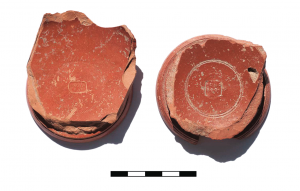
Click here to access the above article on The University of Chicago Press Journals (ASOR membership with online access and/or subscription to The University of Chicago Press Journals Current Content required).
Pp. 205–229: “Archers, Antiochos VII Sidetes, and the ‘BE’ Arrowheads,” by Matasha Mazis and Nicholas L. Wright
Bronze arrowheads featuring barbs, a tang, and a nodule at the base of the head were widespread throughout the Mediterranean region from the 6th century b.c.e. to the end of the Hellenistic period. This 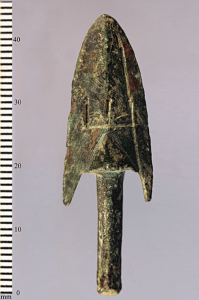
Click here to access the above article on The University of Chicago Press Journals (ASOR membership with online access and/or subscription to The University of Chicago Press Journals Current Content required).
Pp. 231–246: “The Harvard Semitic Museum Palmyrene Collection,” by Eleonora Cussini, Maura K. Heyn, Jeremy M. Hutton, Nathaniel E. Greene, and Catherine E. Bonesho
Three Palmyrene funerary busts 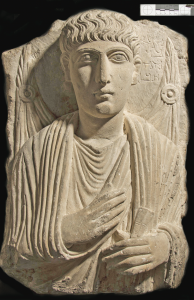
Click here to access the above article on The University of Chicago Press Journals (ASOR membership with online access and/or subscription to The University of Chicago Press Journals Current Content required).
Book Reviews
Pp. 247–248: “Cities and the Shaping of Memory in the Ancient Near East by Ömür Harmanşah,” by Nicola Laneri
Click here to access the above article on The University of Chicago Press Journals.
Pp. 248–249: “A History of Biblical Israel: The Fate of the Tribes and Kingdoms from Merenptah to Bar Kochba by Ernst Axel Knauf and Philippe Guillaume,” by Baruch Halpern
Click here to access the above article on The University of Chicago Press Journals.
Pp. 249–250: “Leadership, Social Memory and Judean Discourse in the Fifth–Second Centuries BCE edited by Diana V. Edelman and Ehud Ben Zvi,” by Christine Mitchell
Click here to access the above article on The University of Chicago Press Journals.
Pp. 250–252: “Tell Qudadi: An Iron Age IIB Fortress on the Central Mediterranean Coast of Israel (with References to Earlier and Later Periods); Final Report on The Hebrew University of Jerusalem Excavations Directed by E. L. Sukenik and S. Yeivin, with the Participation of N. Avigad by Alexander Fantalkin and Oren Tal,” by George A. Pierce
Click here to access the above article on The University of Chicago Press Journals.
To view the entire issue, including book reviews, on University Chicago Press, click here.